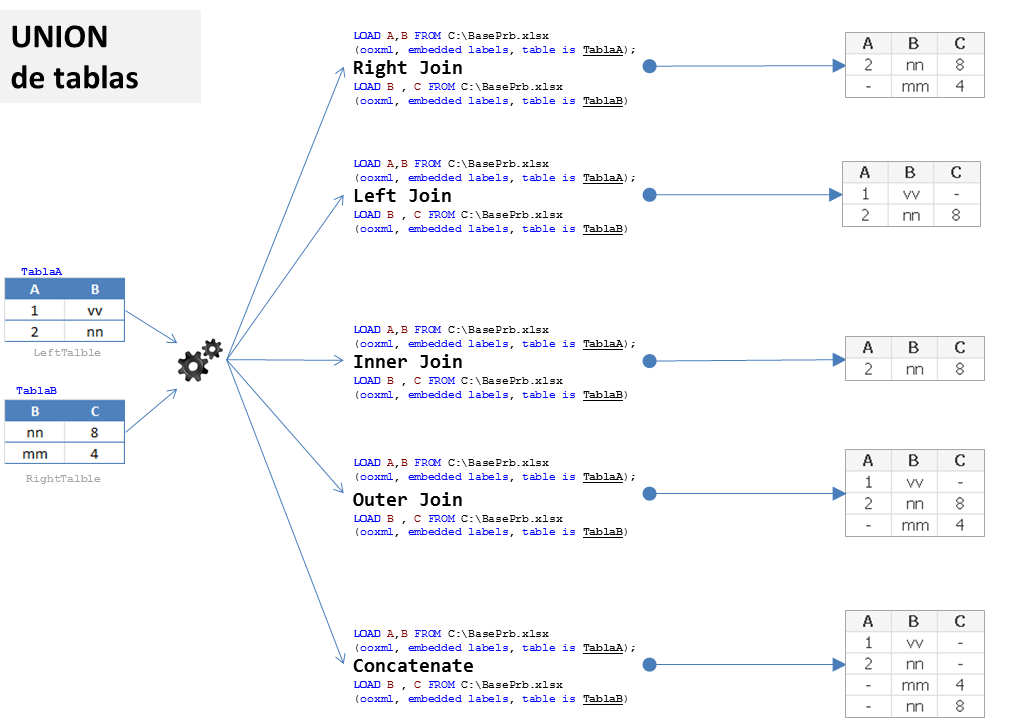Unlock a world of possibilities! Login now and discover the exclusive benefits awaiting you.
- Qlik Community
- :
- All Forums
- :
- QlikView App Dev
- :
- Re: Uses for Left Join and Concatenate in tables?
- Subscribe to RSS Feed
- Mark Topic as New
- Mark Topic as Read
- Float this Topic for Current User
- Bookmark
- Subscribe
- Mute
- Printer Friendly Page
- Mark as New
- Bookmark
- Subscribe
- Mute
- Subscribe to RSS Feed
- Permalink
- Report Inappropriate Content
Uses for Left Join and Concatenate in tables?
Hi all,
I understand the difference between a Left Join and Concatenate in QlikView, but I am having difficulty understanding when or when not to use the to options when it comes to the two options.
Concatenate appends data from one table to another. Thus it is good for combining multiple tables.
What are the risks when using the Concatenate function over a Join for example? Could you concatenate to completely different tables where there is no association?
I understand Left Join more strongly in this case where you want to take all the data from one table and any joining data from the right table so I guess I am weak on using the Concatenate function.
Also, from the tests I have done Concatenate does not seem to be different to Outer Joins where you use the function between two tables with similar key field.
Accepted Solutions
- Mark as New
- Bookmark
- Subscribe
- Mute
- Subscribe to RSS Feed
- Permalink
- Report Inappropriate Content
Concatenate: I often use it when I have different fact tables in the same qlikview doc (another way, link table)
You can always concatenate tables (also if they are completely different), just use concatenate ....
Concatenate: you add rows
Left join: you add columns
see last two for concatenate and outer join
thanks to Enmanuel Santana

- Mark as New
- Bookmark
- Subscribe
- Mute
- Subscribe to RSS Feed
- Permalink
- Report Inappropriate Content
Hi, one difference between concatenate and outer join, is that you can concatenate completely unrelated data, ie not key dependant. (you may want to include a fact type filed in this instance).
- Mark as New
- Bookmark
- Subscribe
- Mute
- Subscribe to RSS Feed
- Permalink
- Report Inappropriate Content
Concatenate: I often use it when I have different fact tables in the same qlikview doc (another way, link table)
You can always concatenate tables (also if they are completely different), just use concatenate ....
Concatenate: you add rows
Left join: you add columns
see last two for concatenate and outer join
thanks to Enmanuel Santana

- Mark as New
- Bookmark
- Subscribe
- Mute
- Subscribe to RSS Feed
- Permalink
- Report Inappropriate Content
Thank you all for your replies, I understand it now! ![]()